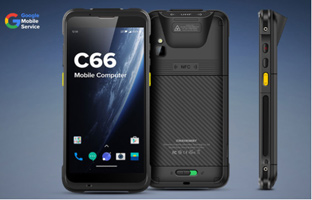Application of UHF RFID in the medical industry

(Sponsored Feature) For the efficiency and convenience UHF RFID could bring, they have gradually been widely applied in a lot of industries. The medical industry is no exception. The demands for timeliness and precision are high in the medical sector. Effectively ensuring the right patients have been provided with accurate and efficient medical services would affect not only the quality of services in hospitals, but also the life and death of patients.
At present, in order to improve the level of medical services and reduce the occurrence of medical errors, a lot of hospitals and medical organizations have adopted UHF handheld terminals, sled readers, and fixed readers based on UHF technology such as CHAINWAY C72 UHF RFID reader, R6 UHF sled readers, etc., for the management of newborns and the management of valuable assets such as high-value consumables, medical devices, etc. The application of these UHF RFID terminals enables accurate tracking, locating and management of people and valuable assets, ensuring that patients are properly treated at the right time and in the right place. At the same time, the environment in which the patients are treated can be accurately documented.
Newborn identification management application
There is a large number of newborns coming to the world every day. However, they are similar in physical characteristics and are unable to interact with the outside world due to lack of comprehension and expression skills. Therefore, traditional manual identification approaches are not reliable. It is difficult even for their biological parents to accurately identify them. Simple item identification approaches are also prone to intentional exchange. Once an error has been made, it will have an irreversible impact on everyone. Therefore, the identification of newborns, in addition to the ordinary patient identification, should employ a third-party matching mechanism to avoid loopholes with a single infant identification approach in order to eliminate malicious exchange.
At present, hospitals generally make use of RFID identification bands to link newborn babies to their mothers. The information on the bands of both mother and infant are the same so that the contents for the mother and her infant can be verified as needed. This includes the mother’s full name, identification number, sex of the baby, date and time of birth, etc. Health care personnel can check whether the relationship is matching through UHF handheld terminals, UHF sled readers, fixed readers, etc. and fully guarantee the security of the patients. If someone tries to steal the newborn from the ward, the RFID smart terminal, which is monitoring in real-time, can issue alerts, track the latest location of the stolen baby, and notify relevant personnel immediately.
